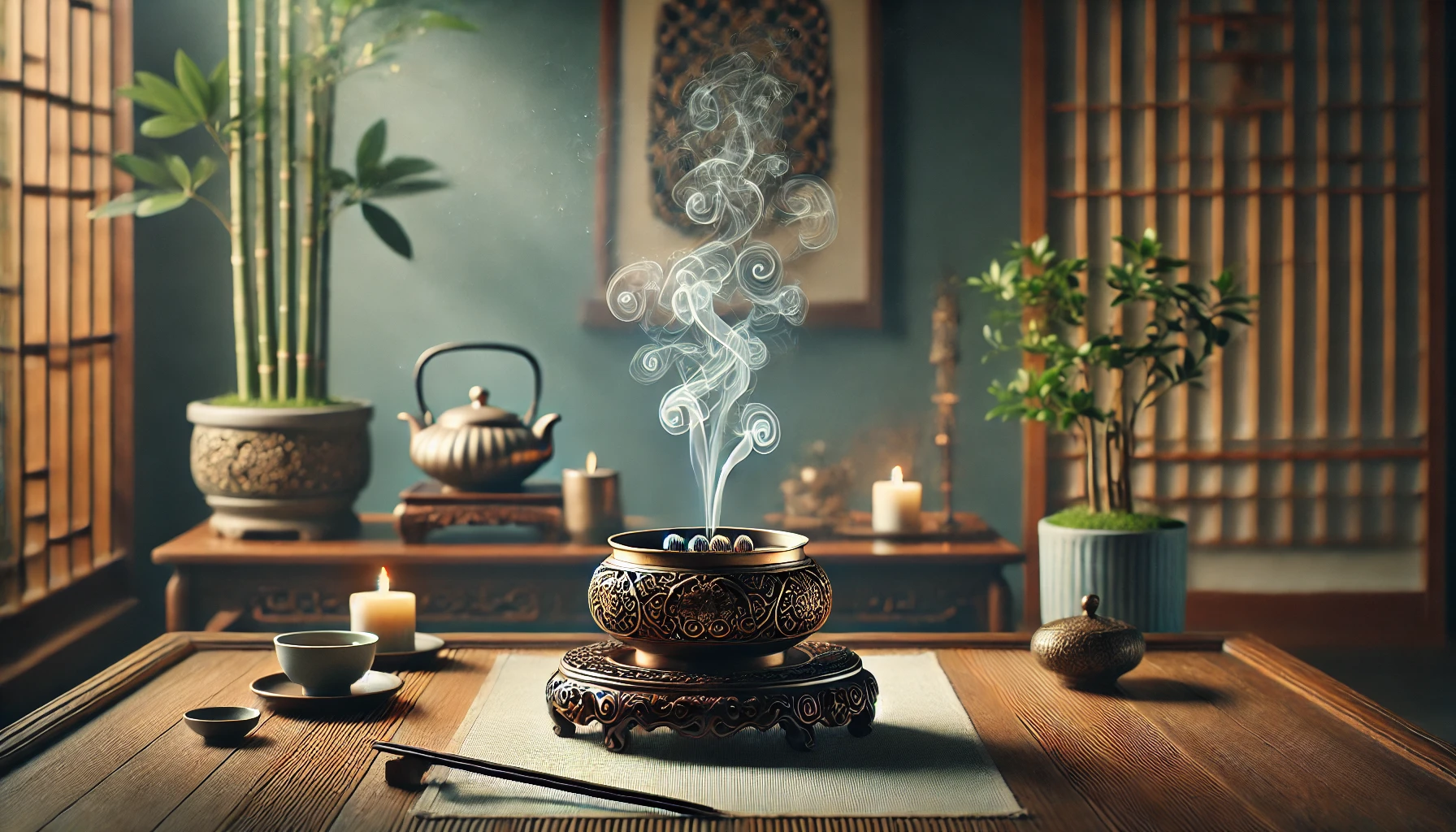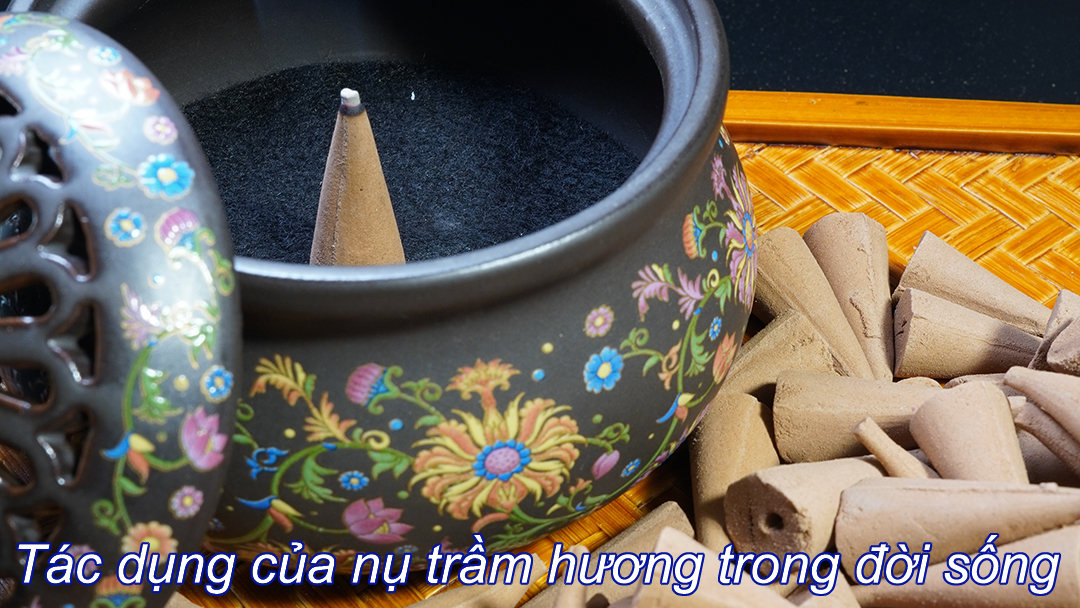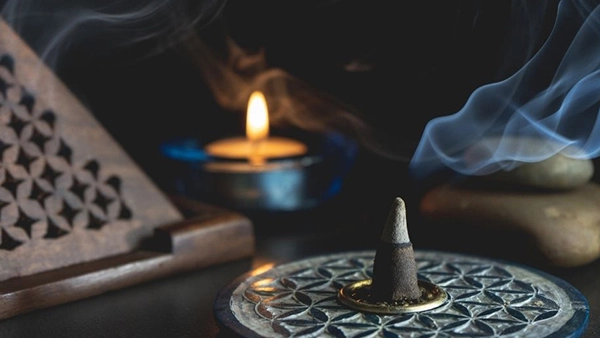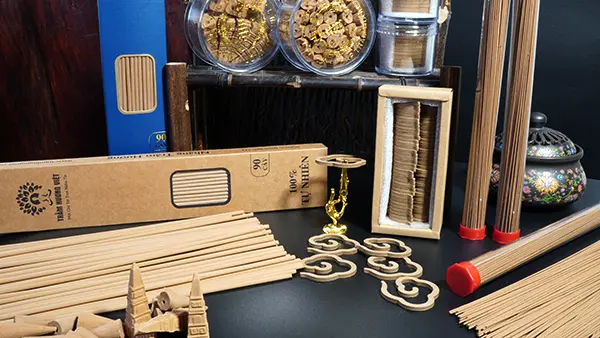- What is Sanh Sanh Agarwood?
- What is Agarwood Agarwood?
- Outstanding features of Sanh Sanh Agarwood
- Classification of Agarwood Agarwood
- How much does Tram Sanh Sunk ring cost?
- How to distinguish between Submersible Agarwood and Floating Agarwood
- Distinguish between submerged and floating agarwood based on origin
- Distinguishing sinking and floating agarwood through essential oil content
- Distinguish between sinking and floating sediments based on their ability to sink
- Distinguish between submerged and floating agarwood through color and grain
- Distinguish between submerged and floating agarwood through scent
- Distinguish between sinking and floating sediments through application
- Distinguish between sinking and floating agarwood through price
Agarwood is loved and sought after by many people because of its rich color, beautiful wood grain, large essential oil content and pure, stable scent.
So what is Tram San Sanm? What different characteristics and benefits does it have compared to Agarwood Agarwood? Let's find out more details with An Thien Huong through the article below.
What is Sanh Sanh Agarwood?
Agarwood is a type of Agarwood with a particularly high essential oil content due to accumulation over many years. Thanks to that, they have stable durability and a characteristic rich fragrance.
The amount of essential oil that makes Agarwood sink is heavier and sinks easily when put in water. Agarwood brings many health benefits, so this type of agarwood has great economic value.
Agarwood sinks
What is Agarwood Agarwood?
Floating agarwood is a type of agarwood belonging to the Tram Sanh line. Due to its lower essential oil content than submerged agarwood, floating agarwood is lighter in weight and does not sink in water. Floating agarwood still retains its sweet, sweet scent. Typical elegance of Tram Huong. However, the scent may fade over time.
Agarwood is yellow-brown, dark brown, or pure black. Wood grain has beautiful, diverse patterns with many grain patterns such as mountain grain, rain grain, and hove grain.
Outstanding features of Sanh Sanh Agarwood
Some of the superior characteristics of Agarwood are:
- Weight: Because it contains a large amount of essential oils, Agarwood has a heavier weight and is more sturdy in the hand than regular Agarwood. Thanks to that, the durability of the agarwood will be high as well as good impact resistance.
- Color: Agarwood is usually dark brown or dark yellow. When you observe, you can see the dark and light wood fibers overlapping each other very naturally and beautifully.
- Fragrance: Thanks to the large essential oil content, Agarwood has a strong and long-lasting fragrance. The scent can last from a few hours to a few days.
- Value: Agarwood has high economic, medical, spiritual, feng shui and aesthetic value.
Submersible Agarwood has many outstanding advantages compared to regular Agarwood
Classification of Agarwood Agarwood
There are two main types of Agarwood: Natural Agarwood and Artificial Agarwood:
- Natural Sunken Agarwood: This type of Agarwood is formed when the Aquilaria tree is subjected to external impacts such as rainstorms, lightning, breaking or being infected with fungi, etc. Over hundreds of years of accumulation. and the resin seeps in, changing the properties of the wood. The originally soft and spongy Aquila wood becomes hard and dark, forming natural Agarwood. This is the rare and most valuable type of Agarwood.
- Artificially submerged Agarwood: Created from the process of cultivating Agarwood on Aquilaria trees. This is a manual transplant process or advanced transplant technology with the purpose of shortening the sedimentation time of the Arowana tree.
Distinguish between natural and artificial Agarwood
How much does Tram Sanh Sunk ring cost?
The selling price of the Agarwood bracelet is often of interest to many people. Their prices depend on the size, quality and place of origin of each specific product.
Normally, the price of Agarwood bracelets will range from 2,000,000 to 10,000,000.
For example:
- A 10mm sunken Agarwood ring costs from 2 million to 5 million
- A 12mm sunken Agarwood ring costs 5 million to 10 million
Sunken Agarwood bracelets have high value on the market
How to distinguish between Submersible Agarwood and Floating Agarwood
The terms “bass – floating bass” are used to help bass players distinguish between their qualities. Because these two types of agarwood are quite similar, it is easy to get confused if you do not research carefully. Based on practical experience, I will share with you how to distinguish between sinking bass and floating bass.
Distinguish between submerged and floating agarwood based on origin
Sunken Agarwood is a high-quality Agarwood and has a high essential oil content. Therefore, Aquilaria trees that produce sunken agarwood will have a quite high age, on average over 40 years for a block of agarwood.
When Agarwood essential oil accumulates on the trunk of the Aquilaria tree long enough, it will become concentrated and solidify into thin, dark-colored pieces of wood.
Submersible Agarwood has a higher essential oil content, stronger scent and darker color than floating Agarwood.
Unlike sinking agarwood, floating agarwood has a small percentage of essential oils in the wood. Normally, floating sediments have a shorter number of years of sedimentation than submerged sediments. On average, 8 – 10 years is the sedimentation time for floating agarwood.
Floating Agarwood has a small age and little essential oil, so when dropped into water it will float
Distinguishing sinking and floating agarwood through essential oil content
Not all sunken agarwood has value and high essential oil content. For pieces of agarwood that contain more Aquilaria wood than the amount of essential oil, it can also cause the agarwood to sink.
Therefore, buyers need to carefully learn about the origin of agarwood to accurately assess the quality of submerged agarwood. According to my research, the essential oil content in agarwood accounts for 40%-80% of the total volume of wood.
The connection of thin pieces of wood will create a solid and impact-resistant block of basswood
Because the rate of agarwood contamination is lower than 25%, the density of agarwood will now be lighter than water, so it will float on the water surface. Therefore, depending on the essential oil content, the agarwood block will have a part that sinks and a part that floats on the water surface.
Agarwood has a small age, usually over 8 years, so the amount of essential oil in the wood grains is relatively small
Distinguish between sinking and floating sediments based on their ability to sink
Because of the long accumulation time, the sunken agarwood contains a large amount of agarwood essential oil, which is often concentrated in the wood fibers and makes the agarwood harder and heavier than other types. Therefore, I often test Agarwood by dropping it into the water. If it sinks, I determine that this line is a sinking agarwood.
The sunken ring helps pray for peace, luck and smooth work
These types of agarwood are quite young, so their essential oil content and value are not high. True to its name, this type of agarwood when dropped into water will float, so it is called floating agarwood.
Floating agarwood is light in weight, so when dropped into water, it will float and not sink like agarwood
Distinguish between submerged and floating agarwood through color and grain
Real Agarwood that sinks in water accumulates Agarwood for a long time in each fiber of Aquilaria wood, so it will have a black or dark brown color. When observing, I saw the sharp, interrupted horizontal stripes of the wood interwoven between wood flesh and agarwood essential oil.
Agarwood has prominent wood grain, beautiful shine and a warmer scent than regular types
Normally, those who are knowledgeable about Agarwood like me can distinguish between two types of Agarwood through their colors. If the submerged Agarwood has a dark color, the floating Agarwood has light yellow, light brown wood grain. The wood grain of floating agarwood is sparse and has lighter ripples than that of submerged agarwood.
Agarwood has a light color, sparse wood grain and slight ripples
Distinguish between submerged and floating agarwood through scent
The sweet, warm, and delicate fragrance is the characteristic of the Agarwood line. Thanks to the higher percentage of essential oils in Agarwood compared to regular Agarwood, the scent of Agarwood is stronger, more durable and longer lasting.
The scent of agarwood brings a feeling of relaxation, helping to relieve stress after a long, tiring day of work
Thanks to the essential oil content in agarwood, Agarwood has a special fragrance. Agarwood has a warm nature so the scent is quite pleasant and brings a feeling of relaxation. The scent of agarwood is light, pleasant and fleeting, not as strong as agarwood.
The scent of floating agarwood is light and fleeting, the scent retention time is less than that of submerged agarwood
Distinguish between sinking and floating sediments through application
Nowadays, people often use agarwood to make many different types of jewelry, the most popular being Agarwood beads and bracelets. Unique and impressive design, Tram Huong jewelry helps express the class and temperament of the wearer. Thanks to the accumulation of heaven and earth's aura, items made from agarwood carry great spiritual and feng shui significance.
People who are easily angered and often suffer from insomnia wearing an agarwood bracelet will help calm their nerves, balance their emotions and improve their sleep effectively.
Because the quality is so high, the price of submerged Agarwood is quite high, so products made from floating Agarwood are more popular on the market. Typical examples include jewelry, handicrafts, and fine arts made from embossed agarwood that are both valuable, beautiful, and extremely noble.
In addition to being used as jewelry, Agarwood is also a feng shui item that many people trust and choose thanks to its uses.
See more articles on the uses of Agarwood
Distinguish between sinking and floating agarwood through price
Currently, the selling price of agarwood ranges from 1,000,000 – 5,000,000 VND/kg of raw agarwood. If agarwood has a high essential oil content, the selling price will be higher. Normally, the price of agarwood rings ranges from a few hundred thousand to a few million dong.
Floating agarwood will have prices ranging from 2 million VND/kg and as high as 25,000,000 VND/kg. The price of Agarwood depends on many factors, from color, essential oil content, and age of the agarwood.
Through this article, An Thien Huong has shared with you basic information about Agarwood. This is one of the precious products that brings many health, aesthetic and spiritual values to users.
Hopefully the information I just shared will help you better understand the origin, characteristics, price as well as how to distinguish between submerged and floating agarwood. If you are still afraid of buying poor quality products, go to a place with a clear and reputable certificate like An Thien Huong.
If you have any questions related to Agarwood, readers can contact An Thien Huong Fanpage or Hotline 0877.246.888. Agarwood expert Trung Hieu and a team of experienced Agarwood consultants from the Vietnam Agarwood Association will give you the most accurate answer.









![[Cập Nhật] Bảng Giá Trầm Hương Mới Nhất Hiện Nay 2024 [Cập Nhật] Bảng Giá Trầm Hương Mới Nhất Hiện Nay 2024](https://anthienhuong.com/wp-content/uploads/2022/11/tram-huong-gia-bao-nhieu-2.jpg)

















Ý kiến bạn đọc (0)